List Different of Piercing Types Names With Meanings
Body piercing is one of the oldest and most diverse forms of body modification known to humanity. Across various cultures and civilizations, piercings have held significance in terms of beauty, spirituality, identity, and status. Today, piercings are a form of self-expression and personal aesthetics, with numerous styles and placements to choose from. Whether you're considering your first piercing or expanding your collection, it helps to understand the types and their meanings. Below is a comprehensive guide to different piercing types categorized by body part.
1. Ear Piercings
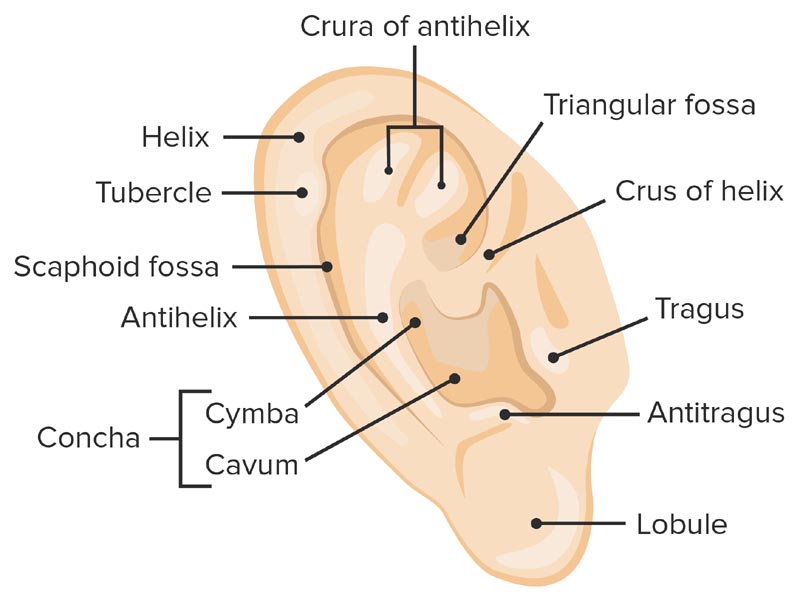
Ear piercings are a form of body modification where a small hole is created in the ear, typically for the purpose of wearing jewelry. This practice has been around for thousands of years, with cultural and personal significance in various societies. The most common type of ear piercing is the lobe piercing, although cartilage piercings, such as helix and tragus, have gained popularity. The procedure is usually done with a needle or piercing gun, and proper aftercare is essential to avoid infections or complications. Ear piercings can be a fashion statement, cultural tradition, or a form of self-expression. Multiple piercings are also common in various styles. With multiple locations on the ear to pierce, you can create a curated look tailored to your taste.
Lobe Piercing
- Location: The soft lower part of the ear.
- Meaning: Often a person’s first piercing, symbolizing coming of age or tradition. It’s simple and socially accepted.
Upper Lobe Piercing
- Location: Just above the standard lobe.
- Meaning: Adds a layered look to lobe piercings; popular for stacking jewelry.
Helix Piercing
- Location: The outer upper cartilage of the ear.
- Meaning: Represents a bolder fashion choice; symbolizes non-conformity for some.
Forward Helix Piercing
- Location: Where the ear meets the head, along the helix ridge.
- Meaning: Edgy and modern, it often reflects individuality.
Industrial Piercing
- Location: Two piercings connected by a single barbell across the ear’s cartilage.
- Meaning: Known for its bold and punk-like appearance.
Tragus Piercing
- Location: The small flap covering the ear canal.
- Meaning: Minimalist and subtle; said to help with migraines or anxiety (though not medically proven).
Anti-Tragus Piercing
- Location: Opposite the tragus, above the earlobe.
- Meaning: Aesthetic and unique; chosen by those seeking less common placements.
Daith Piercing
- Location: The inner cartilage fold above the ear canal.
- Meaning: Allegedly helps with migraines and anxiety; has spiritual connotations in some cultures.
Conch Piercing
- Location: The cartilage in the center of the ear.
- Meaning: Versatile and bold, representing inner strength.
Rook Piercing
- Location: The fold of cartilage above the daith.
- Meaning: Sophisticated and mysterious, it represents resilience.
Snug Piercing
- Location: Inner cartilage midway down the ear.
- Meaning: Stylish and rare, for those who enjoy standing out.
2. Facial Piercings
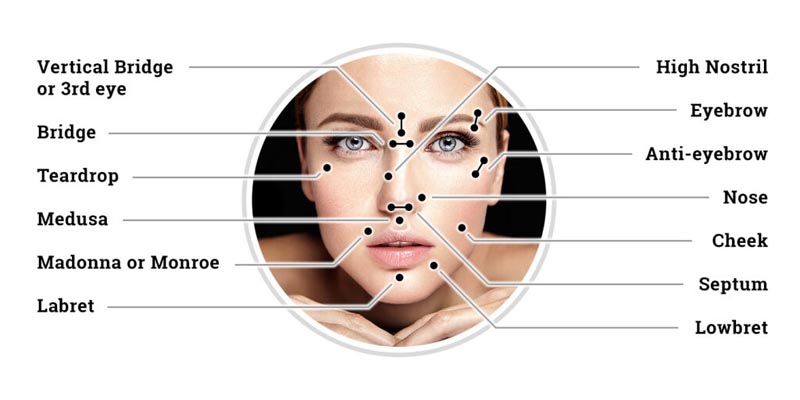
Facial piercings are body modifications that involve creating holes in the skin on the face to insert jewelry. Popular types include eyebrow, cheeks, nose, lip, and septum piercings. Each piercing varies in placement and style, offering a form of self-expression. Facial piercings can range from subtle, such as small studs, to more elaborate designs like hoops or rings. They have cultural, aesthetic, or personal significance and are often chosen for their bold or unique look. While facial piercings are generally safe when done professionally, proper aftercare is essential to prevent infections or complications.
Facial piercings span across the eyebrows, cheeks, and more, offering bold or subtle aesthetic enhancements.
Eyebrow Piercing
- Location: Anywhere along the eyebrow ridge.
- Meaning: Symbolizes rebellion or bold individuality; often used to frame the face.
Bridge Piercing
- Location: Between the eyes, across the bridge of the nose.
- Meaning: Gives an exotic or futuristic look; symbolizes breaking norms.
Cheek Piercing (Dimple Piercing)
- Location: Where dimples would naturally appear on the cheeks.
- Meaning: Enhances facial features, often seen as playful and youthful.
3. Nose Piercings
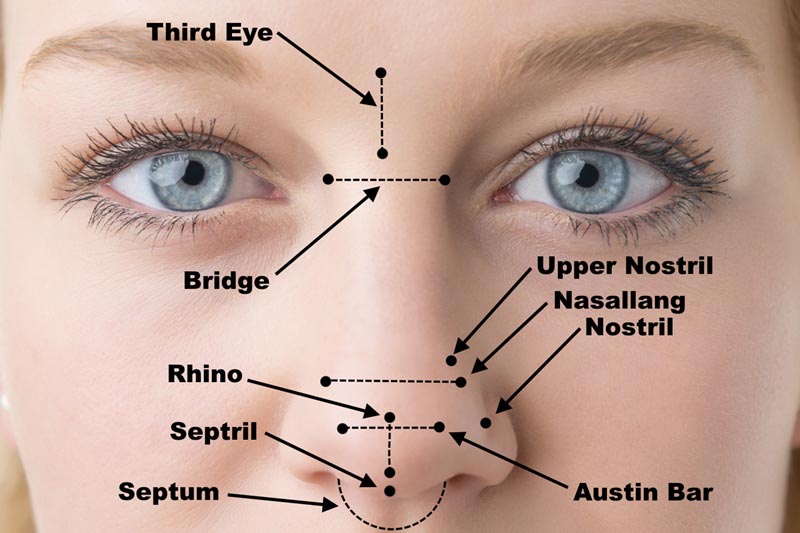
Nose piercings are a popular form of body modification where a small hole is made in the nose to insert jewelry. Common types include nostril, septum, and bridge piercings. They hold cultural significance in many parts of the world, especially in South Asia, where they are often worn as a symbol of beauty, tradition, or marital status. Nose piercings can be adorned with studs, hoops, or rings made from various materials like gold, silver, or surgical steel. While fashionable and expressive, proper hygiene and care are essential to prevent infections and ensure smooth healing after getting a nose piercing.
Nostril Piercing
- Location: The side of the nose.
- Meaning: In Indian and African cultures, it symbolizes beauty, fertility, and marriage; now a popular mainstream choice.
High Nostril Piercing
- Location: Higher up on the nostril than a traditional piercing.
- Meaning: Fashion-forward and unique.
Septum Piercing
- Location: The cartilage divider between the nostrils.
- Meaning: In tribal cultures, it denotes strength and status. Modern wearers often choose it for its bold aesthetic.
Bridge Piercing
- Location: Across the top of the nose bridge (also categorized under facial piercings).
- Meaning: Futuristic and edgy; not for the faint-hearted.
4. Oral Piercings
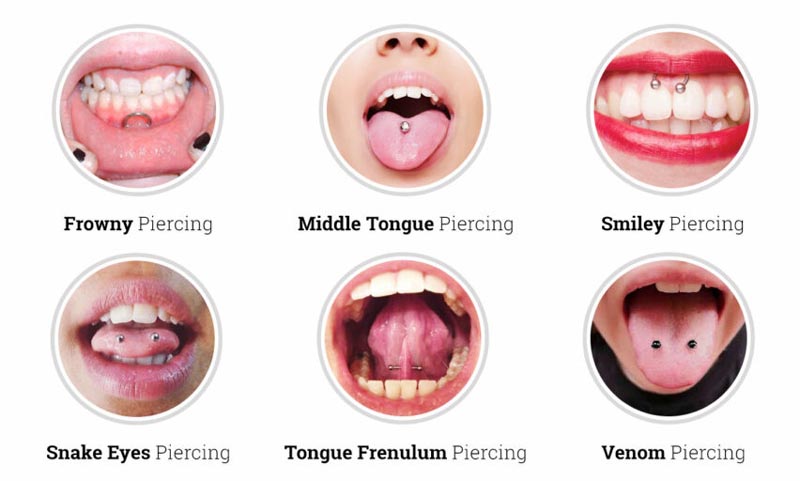
Oral piercings are body modifications involving the insertion of jewelry into the mouth area, such as the tongue, lips, or frenulum (the thin tissue under the tongue or upper lip). Popular among individuals seeking a unique style statement, these piercings can range from subtle studs to more elaborate rings. While they are a form of self-expression, oral piercings require careful aftercare to prevent infections, swelling, or dental damage. Improper hygiene or placement can lead to complications like chipped teeth or gum recession. Consulting a professional piercer and maintaining proper oral hygiene is essential for safe healing and long-term health.
Tongue Piercing
- Location: Through the center of the tongue.
- Meaning: Historically linked to spiritual practices; in modern times, it's viewed as bold and sensual.
Venom Piercings
- Location: A pair of piercings on each side of the tongue.
- Meaning: Edgy and unique, chosen by those who love symmetry and intensity.
Frenulum Piercing (Smiley/Frowny)
- Location: Thin tissue connecting the lips and gums (upper is "smiley", lower is "frowny").
- Meaning: Hidden and playful, a discreet choice for those who like private body mods.
5. Lip Piercings
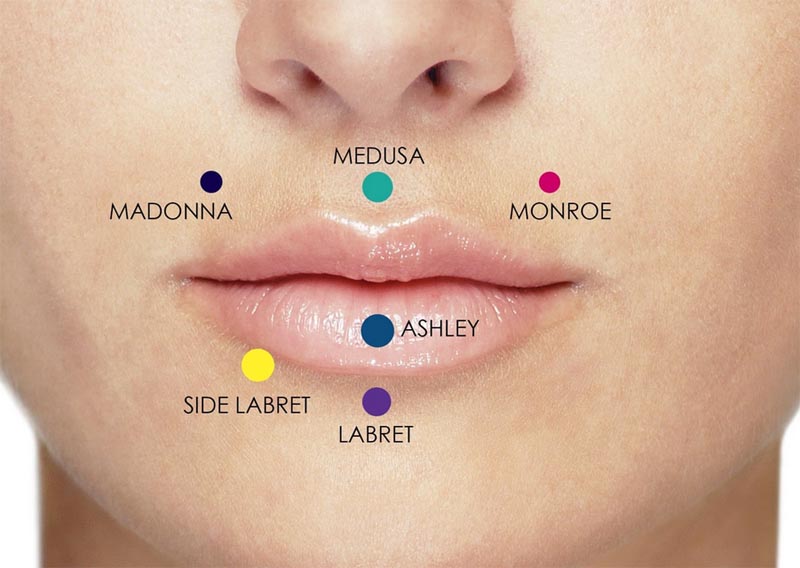
Lip piercings are a form of body modification where jewelry is inserted through the skin or tissue around the lips. Common types include labret, Monroe, Medusa, and snake bites, each placed at different points on or near the lips. These piercings can be done for aesthetic, cultural, or personal expression purposes. Typically performed with a sterilized needle, aftercare is crucial to prevent infection and ensure proper healing. Jewelry used includes studs, rings, or barbells, often made of surgical steel, titanium, or gold. Lip piercings have gained popularity in alternative fashion and among individuals seeking a unique look.
Labret Piercing
- Location: Below the bottom lip, centered.
- Meaning: Common among various tribes; symbolizes strength and beauty.
Monroe Piercing
- Location: Upper lip, left side, mimicking Marilyn Monroe’s beauty mark.
- Meaning: Glamorous and retro, gives a vintage Hollywood flair.
Madonna Piercing
- Location: Upper lip, right side.
- Meaning: Named after the singer Madonna, for her signature mole.
Medusa Piercing
- Location: Centered above the upper lip (philtrum).
- Meaning: Adds symmetry to facial features; classy yet bold.
Snake Bites
- Location: One piercing on each side of the lower lip.
- Meaning: Symbolizes fierceness and individuality.
Spider Bites
- Location: Two piercings close together on one side of the lower lip.
- Meaning: Edgy and compact, often selected by those who prefer asymmetry.
Angel Bites
- Location: Pair of piercings on each side of the upper lip.
- Meaning: A dramatic and stylish look for those who love statement piercings.
6. Belly Button / Navel Piercings
A belly button or navel piercing is a type of body modification where jewelry is inserted through the skin around the navel, typically the upper rim. It is a popular form of self-expression and fashion, especially among women. This piercing is usually done using a sterilized needle, followed by the insertion of curved barbells or rings. Healing time can range from 6 months to a year, depending on aftercare and individual healing response. Proper hygiene is essential to prevent infections. Navel piercings can enhance the appearance of the midsection and are often flaunted with crop tops or swimwear.
Navel Piercing
- Location: The skin around the belly button, usually at the top.
- Meaning: Symbolizes femininity and body confidence; popularized in the late '90s and early 2000s.
Inverse Navel Piercing
- Location: Bottom of the navel.
- Meaning: A twist on the traditional look, often worn with crop tops or swimsuits.
7. Nipple Piercings
Nipple piercings are a type of body modification where a needle is used to create a hole through the nipple, allowing jewelry such as barbells or rings to be worn. This piercing can be done on one or both nipples and is popular among individuals of all genders. People choose nipple piercings for aesthetic, sensual, or personal expression reasons. Healing typically takes several months, and proper aftercare is crucial to prevent infection or complications. While often considered bold or edgy, nipple piercings have become increasingly mainstream and are available at most professional piercing studios with proper hygiene standards.
Nipple Piercing
- Location: Horizontally or vertically through the nipple.
- Meaning: Can symbolize empowerment, body ownership, or eroticism. Some also claim it enhances sensitivity.
8. Genital Piercings
Genital piercings involve the insertion of jewelry into the genital area for aesthetic, cultural, personal, or sexual reasons. Both men and women can choose from various types of piercings, such as the Prince Albert, frenulum, or ampallang for men, and the clitoral hood or labia piercings for women. These piercings require careful attention to hygiene and aftercare to prevent infections or complications. While some people seek them for enhanced sexual pleasure, others choose them as a form of self-expression. It is essential to consult experienced professionals for genital piercings to ensure safety, proper placement, and successful healing.
For Women:
- Vertical Clitoral Hood (VCH): Enhances sensitivity; popular for aesthetics and function.
- Horizontal Clitoral Hood (HCH): Similar to VCH but positioned horizontally.
- Inner/Outer Labia Piercings: Can be decorative or part of genital jewelry collections.
- Triangle Piercing: Positioned beneath the clitoral hood; rare and complex.
For Men:
- Prince Albert: Enters the urethra and exits below the glans.
- Frenum Piercing: Located on the underside of the shaft.
- Ampallang & Apadravya: Horizontal and vertical shaft piercings respectively.
- Guiche Piercing: Between the scrotum and anus (perineum).
Meanings: Often connected to sexual freedom, kink culture, or enhancing pleasure. Some tribal communities use them for initiation rites.
9. Surface Piercings
Surface piercings are a type of body modification where jewelry is inserted through a flat area of skin rather than a protruding part, like an ear or nostril. Common locations include the nape of the neck, chest, hips, or wrists. Unlike traditional piercings, surface piercings have both entry and exit points on the skin's surface, making them more prone to rejection or migration as the body may push the jewelry out. They require extra care during healing to avoid irritation or infection. Popular jewelry for surface piercings includes surface barbells and dermal anchors, offering a stylish and edgy appearance.
Examples Include:
- Collarbone Piercing
- Hip Piercing
- Wrist Piercing
- Nape (Back of Neck) Piercing
Meaning: Modern and striking, they often reflect bold personality choices and avant-garde fashion.
Note: These are prone to rejection or migration if not properly cared for.
10. Dermal Piercings
Dermal piercings, also known as microdermal or single-point piercings, are a type of body modification where a small anchor is inserted beneath the skin’s surface. Unlike traditional piercings that have an entry and exit point, dermal piercings rest flat against the skin with only the decorative end visible. Common placement areas include the chest, lower back, face, and collarbone. A dermal punch or needle is used to create a pocket in the skin for the anchor. Healing takes several weeks, and proper aftercare is essential to prevent infection, rejection, or migration. These piercings offer a unique and stylish aesthetic.
Common Areas:
- Chest
- Back
- Face
- Hands
- Hips
Meaning: Seen as futuristic, elegant, or artistic. They create the illusion of embedded gems or ornaments without the need for an exit hole.
Choosing the Right Piercing
Whether you're drawn to piercings for cultural, spiritual, aesthetic, or personal reasons, it’s crucial to research each type thoroughly. The meaning behind a piercing can be deeply personal or influenced by tradition, trends, and societal values. Hygiene, healing time, and proper aftercare are essential to ensure your piercing remains safe and beautiful.
In today’s body-positive era, piercings empower individuals to express themselves in creative and meaningful ways. From the subtle elegance of a nose stud to the bold statement of a dermal gem, each piercing tells a unique story—yours.